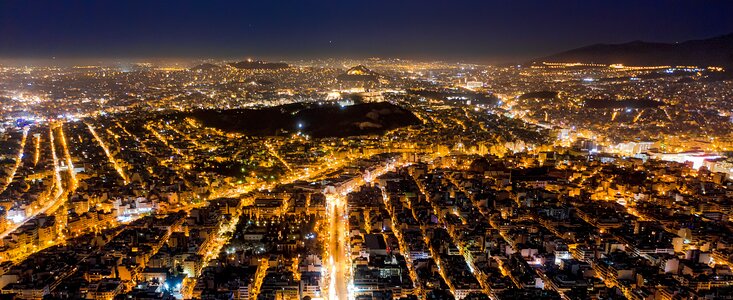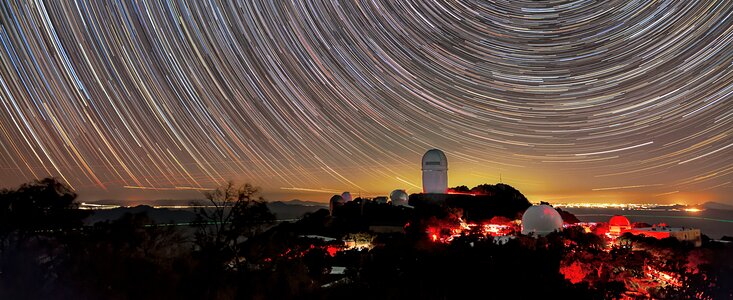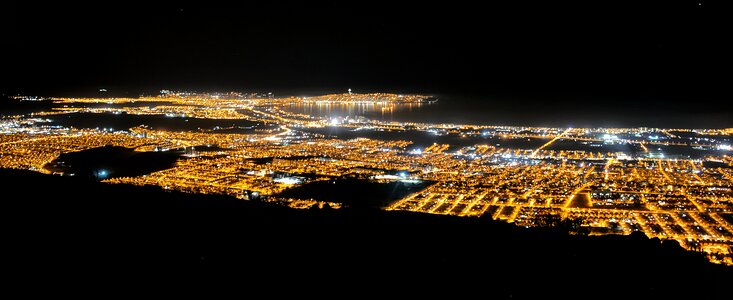Light Pollution and Satellite Constellations
— NOIRLab’s work protecting our astronomical sites
Why is light pollution a problem?
Since the introduction of urban illumination more than a century ago, the visibility of the pristine starry night sky has been gradually fading. In recent times, the level of light pollution has increased dramatically, especially through the advent of new illumination devices (LEDs, or light-emitting diodes). Because of their low energy consumption and high content of blue light, LEDs unfortunately contribute to a strong increase in the level of light pollution in vast regions of the globe.
The adoption of LED lighting in recent years is a double-edged sword. On one hand, LEDs are easy to dim, typically provide downward-directed lighting and use significantly less energy than alternate light sources. On the other hand, the low cost of LEDs has led to their widespread use in places where they are simply not needed and their operation at higher brightness than necessary, which significantly increases light pollution.
Star trails can be seen here in this long-exposure photo of the Kitt Peak National Observatory, as can the distant light pollution from Tucson, Arizona, in the background. Light pollution poses an increasing threat to research observatories like Kitt Peak.
Credit: KPNO/NOIRLab/NSF/AURA
Entire generations living in urban areas have never seen our Milky Way galaxy arching overhead at night. For the vast majority of people on the planet, understanding our place in the Universe starts with being able to see the night sky in the first place. It is now estimated that 83% of people on Earth live under light-polluted skies that essentially wash out the Milky Way.
Light pollution is not just a problem for our precious cultural heritage, but it also threatens the remote mountaintop sites where the major world-class astronomical facilities operate. With the newest generation of ground-based observatories coming online and conducting cutting-edge research into dark matter, life on other planets, and other thought-provoking astronomical and cosmological questions, preserving their ability to do this science is more important than ever.
Controlling light pollution is key to preserving the dark night skies that enable world-class science and bring scientific investment and astronomy tourism to Chile, Arizona, and Hawai‘i, all of which are regions where NOIRLab facilities are operated. Tourism and the jobs brought to these regions enable growth that has a far-reaching economic and social impact beyond just astronomical research.
Light pollution over the Coquimbo-La Serena metropolitan area in 2016. The orange light is from older high-pressure sodium street lamps, while the white light is from newer LEDs, most of which do not conform to dark-sky standards.
Credit: NOIRLab/NSF/AURA
Artificial light at night is the term most commonly used when discussing light pollution. It is primarily associated with urban illumination but follows human activity almost everywhere, including to remote drilling and mining operations, overlit tourist attractions, and other such destinations. The International Astronomical Union has established a recommended maximum tolerable threshold of light pollution for astronomical sites of 10% above natural background levels. Light pollution is growing globally at an estimated rate of 2% to 6% per year and is reducing darkness everywhere, including at observatory sites, which risk hitting the 10% threshold in the next decade.
In addition to its impact on astronomy, there is convincing evidence that light pollution also negatively affects various ecological and biological systems such as nocturnal animals, insects, and various human biological systems that are important to our health and well-being. It may also affect crucial ecological systems that concern agriculture and food supplies. Thus, monitoring and mitigating light pollution as much as possible is vital not just for our understanding of the Universe but for humanity and our planet’s well-being as a whole.


